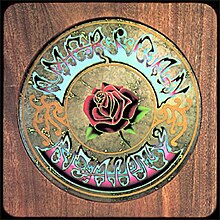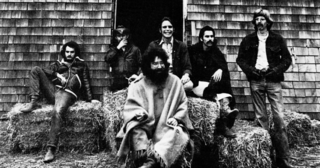
The Grateful Dead was an American rock band formed in 1965 in Palo Alto, California. The band is known for its eclectic style, which fused elements of rock, blues, jazz, folk, country, bluegrass, rock and roll, gospel, reggae, and world music with psychedelia; for its differentiated live performances centered around improvisation; and for its devoted fan base, known as "Deadheads". According to the musician and writer Lenny Kaye, "Their music touches on ground that most other groups don't even know exists." For the range of their influences and the structure of their live performances, the Grateful Dead are considered "the pioneering godfathers of the jam band world".

Live/Dead is the first official live album released by the rock band Grateful Dead. Recorded over a series of concerts in early 1969 and released later the same year, it was the first live rock album to use 16-track recording.
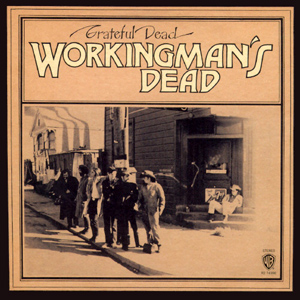
Workingman's Dead is the fourth studio album by American rock band Grateful Dead. It was recorded in February 1970 and originally released on June 14, 1970. The album and its studio follow-up, American Beauty, were recorded back-to-back using a similar style, eschewing the psychedelic experimentation of previous albums in favor of Jerry Garcia and Robert Hunter's Americana-styled songcraft.

Anthem of the Sun is the second album by rock band the Grateful Dead, released in 1968 on Warner Bros/Seven Arts. It is the first album to feature second drummer Mickey Hart. The band was also joined by Tom Constanten, who contributed avant-garde instrumental and studio techniques influenced by composers John Cage and Karlheinz Stockhausen.

Blues for Allah is the eighth studio album by the Grateful Dead. It was recorded February 27 – May 7, 1975, and released September 1, 1975. It was the band's third album on their own Grateful Dead Records label and their third studio album in a row. Blues for Allah was the group's highest-charting album until 1987's In the Dark, reaching No. 12 during a thirteen-week stay on the Billboard Album Chart.

What a Long Strange Trip It's Been is the second compilation album by American rock band Grateful Dead. It was released August 18, 1977 by Warner Bros. Records, three and a half years after the Skeletons from the Closet compilation. Both albums are subtitled "The Best of the Grateful Dead". Unlike the previous compilation, What a Long Strange Trip It's Been is a double album.
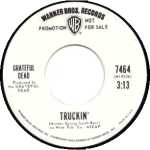
"Truckin'" is a song by the Grateful Dead, which first appeared on their 1970 album American Beauty. It was recognized by the United States Library of Congress in 1997 as a national treasure.

The Very Best of Grateful Dead is a single-CD compilation album chronicling all the years of the San Francisco psychedelic band the Grateful Dead. It is the first release to document every label the band recorded on: Warner Bros. Records, Grateful Dead Records/United Artists Records and Arista Records. It was released on September 16, 2003.
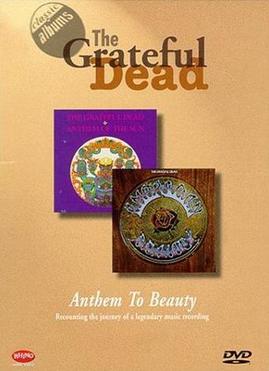
Anthem to Beauty is a music documentary about the making of the Grateful Dead albums Anthem of the Sun and American Beauty. It originally aired in a somewhat shortened version in 1997 as part of the television series Classic Albums. It was released on VHS video tape in 1998 and on DVD in 1999, with a running time of 1 hour 15 minutes.

Three from the Vault is a live album by the Grateful Dead. It contains the complete show recorded on February 19, 1971 at the Capitol Theatre in Port Chester, New York. It was released on June 26, 2007.

Rocking the Cradle: Egypt 1978 is a live album by American rock band the Grateful Dead. It contains two CDs and one DVD and was released in 2008. The album was recorded September 15 & 16, 1978, at the Giza pyramid complex in Giza, Egypt. This was the third continent on which the band performed, having previously performed in Europe. The shows on the album were recorded on a 24-track multitrack recorder and were mixed down to stereo for the album's release.

The Warner Bros. Studio Albums is a box set of five vinyl LPs by the rock group the Grateful Dead. It is a reissue of their first five studio albums: The Grateful Dead (1967), Anthem of the Sun (1968), Aoxomoxoa (1969), Workingman's Dead (1970), and American Beauty (1970). These albums were originally released by Warner Bros. Records. The box set was released by Rhino Records on September 21, 2010.
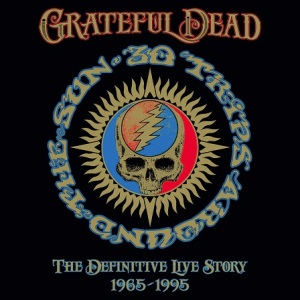
30 Trips Around the Sun: The Definitive Live Story 1965–1995 is a four-CD live album by the rock band the Grateful Dead. It contains 30 songs recorded in concert—one from each of the years 1966 through 1995—plus one song recorded in a 1965 studio session. All of the tracks are selected from the 80-CD box set 30 Trips Around the Sun, which contains 30 previously unreleased complete shows. The album was released on September 18, 2015. A chronological sampling format was also used for the 5-disc set So Many Roads (1965–1995).
Fare Thee Well: Celebrating 50 Years of the Grateful Dead is a live album consisting of audio and video recordings from the Fare Thee Well: Celebrating 50 Years of the Grateful Dead concerts. These shows were performed by former Grateful Dead members Bob Weir, Phil Lesh, Bill Kreutzmann, and Mickey Hart, along with Trey Anastasio, Bruce Hornsby, and Jeff Chimenti. The album was recorded on July 3, 4, and 5, 2015, at Soldier Field in Chicago, Illinois. The other two Fare Thee Well concerts, played on June 27 and 28 at Levi's Stadium in Santa Clara, California are not included. The album was released on November 20, 2015.

Sage & Spirit is a compilation album by the rock band the Grateful Dead. It contains ten songs – eight recorded in the studio and two live – selected from various albums. It was produced as a vinyl LP in a limited edition of 4,000 copies, and released on April 3, 2019 in conjunction with Record Store Day.
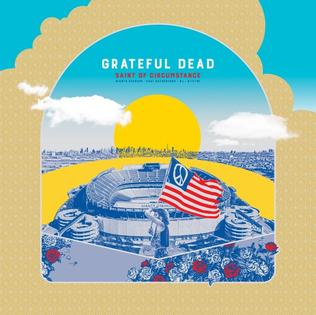
Saint of Circumstance is a live album by the rock band the Grateful Dead. It contains the complete concert recorded at Giants Stadium in East Rutherford, New Jersey on June 17, 1991. It was released on September 27, 2019, on three CDs or five LPs. The same recording was also released the same day as part of the 14-CD album Giants Stadium 1987, 1989, 1991.
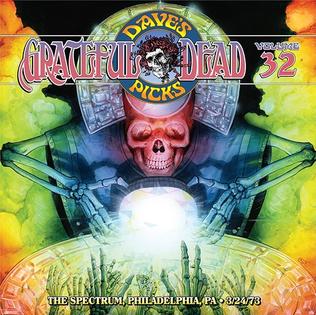
Dave's Picks Volume 32 is a 3-CD live album by the rock band the Grateful Dead. It contains the complete concert recorded at the Spectrum in Philadelphia on March 24, 1973. It was released on November 1, 2019 in a limited edition of 20,000 copies.

The Story of the Grateful Dead is a box set of albums by the rock band the Grateful Dead. It contains eight previously released albums – four recorded in the studio and four recorded live – in vinyl LP format. It comprises 14 discs, on 180-gram colored vinyl. The albums were remastered directly from the original master recordings. The box set includes a booklet of essays by various musicians, each discussing the influence of one of the albums on their own music. The booklet also contains photos of the Grateful Dead. The box set was released by the Vinyl Me, Please record company in November 2020, in a limited edition of 7,500 copies.

Dave's Picks Volume 39 is a three-CD live album by the rock band the Grateful Dead. It contains the complete concert recorded on April 26, 1983, at the Spectrum in Philadelphia, Pennsylvania. It also includes several bonus tracks recorded at the same venue on the previous night, and at the War Memorial Auditorium in Rochester, New York earlier that month. It was released on July 30, 2021, in a limited edition of 25,000 copies.

Dave's Picks Volume 45 is a four-CD live album by the rock band the Grateful Dead. It contains two complete concerts recorded on October 1 and 2, 1977 at the Paramount Theatre in Portland, Oregon. It was released on January 27, 2023, in a limited edition of 25,000 copies.
